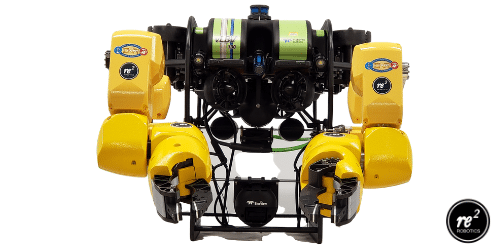RE2 Robotics to equip Maritime Dexterous Manipulation System with autonomous capabilities
May 27, 2020 | AUVSI News

RE2 Robotics will continue the development and commercialization of its technology under the Dexterous Maritime Manipulation System (DM2S) program after receiving $2.5 million in funding from the Office of Naval Research.
Equipped with RE2’s DM2S technology, Navy personnel will be able to autonomously perform mine countermeasure (MCM) missions.
During the next phase of the program, RE2 Robotics will upgrade its dual-arm prototype, known as the Maritime Dexterous Manipulation System (MDMS), for deep ocean use. To enable autonomous manipulation capabilities, the company will also apply computer vision and machine-learning algorithms. Lastly, RE2 says that it will integrate with underwater vehicles that can autonomously navigate.
“In the first phase of this project, we successfully developed a dexterous underwater robotic system that was capable of teleoperation in an ocean environment,” says Jorgen Pedersen, president and CEO of RE2 Robotics.
“This additional funding enables our team to further expand and upgrade the capabilities of our underwater robotic arms to perform MCM tasks in deeper water through the use of autonomy. In addition, this advanced technology will allow us to pursue commercial opportunities, such as underwater inspection and maintenance in the oil and gas industry.”
RE2 Robotics notes that while a lot of underwater robotic systems are hydraulic-driven, MDMS uses an energy-saving, electromechanical system, which allows MDMS to perform longer-duration subsea inspection and intervention tasks while reducing system maintenance and downtime.
“With the development of our first MDMS prototype, we created a compact, lightweight system with a sealed, neutrally buoyant design that was successfully tested in the Pacific Ocean,” says Jack Reinhart, vice president of project management.
“We’re now looking forward to improving upon that proven design by adding even greater functionality in deep water, including integration with new underwater vehicles and computer-vision-based autonomy.”
- Industry News


